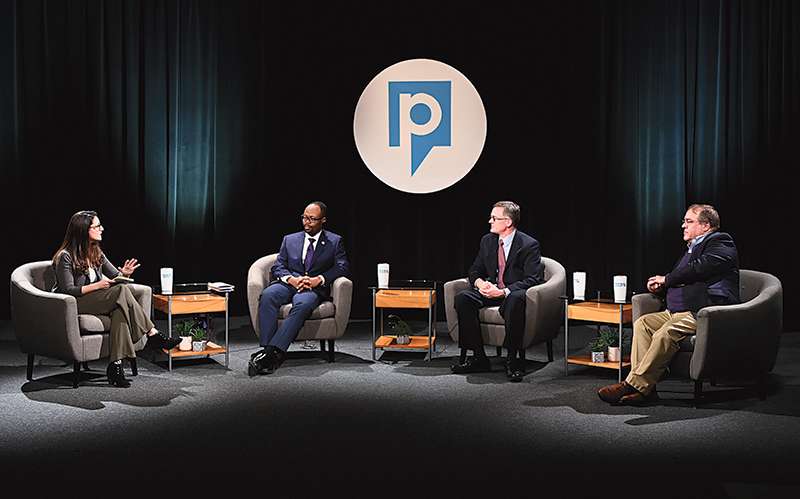
Processing Your Payment
Please do not leave this page until complete. This can take a few moments.
-
News
-
Editions
-
- Lists
-
Viewpoints
-
HBJ Events
-
Event Info
- 2024 Economic Outlook Webinar Presented by: NBT Bank
- Best Places to Work in Connecticut 2024
- Top 25 Women In Business Awards 2024
- Connecticut's Family Business Awards 2024
- What's Your Story? A Small Business Giveaway 2024 Presented By: Torrington Savings Bank
- 40 Under Forty Awards 2024
- C-Suite and Lifetime Achievement Awards 2024
- Connecticut's Health Care Heroes Awards 2024
-
-
Business Calendar
-
Custom Content
- News
-
Editions
View Digital Editions
Biweekly Issues
- April 29, 2024
- April 15, 2024
- April 1, 2024
- March 18, 2024
- March 4, 2024
- February 19, 2024
- February 5, 2024
- January 22, 2024
- January 8, 2024
- + More
Special Editions
- Lists
- Viewpoints
-
HBJ Events
Event Info
- View all Events
- 2024 Economic Outlook Webinar Presented by: NBT Bank
- Best Places to Work in Connecticut 2024
- Top 25 Women In Business Awards 2024
- Connecticut's Family Business Awards 2024
- What's Your Story? A Small Business Giveaway 2024 Presented By: Torrington Savings Bank
- 40 Under Forty Awards 2024
- C-Suite and Lifetime Achievement Awards 2024
- Connecticut's Health Care Heroes Awards 2024
Award Honorees
- Business Calendar
- Custom Content
As local news media covers coronavirus 24/7, industry’s financial health is ailing
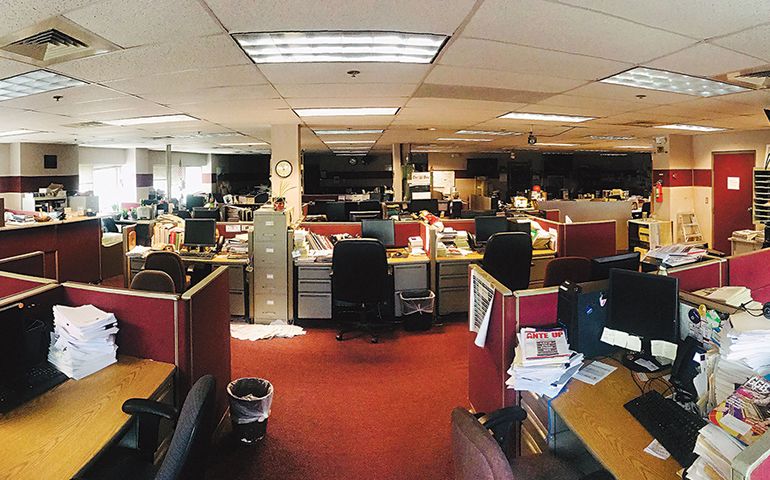 Photo | Contributed
The Day of New London’s newsroom sits empty as most reporters and editors work from home.
Photo | Contributed
The Day of New London’s newsroom sits empty as most reporters and editors work from home.
Just weeks ago, some national experts were predicting the economic crisis set off by the coronavirus pandemic would be the death knell of the local news media industry, particularly newspapers, which have been struggling financially for more than a decade.
While there have been notable media layoffs and cost cutting around the country, including in Connecticut in recent weeks, COVID-19 doesn’t appear to be a definitive nail in the coffin for the industry, at least not yet.
That’s largely because many publishers and broadcasters, just like thousands of other Connecticut employers across myriad industries, are hoping to soon receive federal stimulus loans that will cover their employee payrolls into the summer.
Among them are the regional parent of the Hartford Business Journal, as well as the Connecticut Mirror, New London Day, and Connecticut Public.
Without those low-interest, forgivable loans, some organizations would be forced to drastically cut staff or other costs, executives say. Meantime, U.S. Sen. Richard Blumenthal has called for further federal stimulus funding to help the struggling local media industry.
For now, Connecticut news organizations, while working almost exclusively from home to avoid contracting or spreading the virus, remain mostly intact as they report feverishly on a pandemic that has brought much of the economy to a halt and affected every aspect of daily life.
The situation is surreal for many industries, particularly the news business. The pandemic is dominating news coverage, requiring reporters and editors who don’t typically cover health care and hospitals to get quickly acquainted with the beat. Some outlets, such as the Hartford Courant, have repurposed their sports desks to cover the crisis, since sporting events, from high school to professional, are all on hold.
Others are launching new products or shows to get readers and viewers information they seem to be craving.
“It’s a bizarre time,” said Elizabeth Hamilton, executive editor of the Connecticut Mirror, a nonprofit news operation that covers state policy and politics. “Normally we would be all hands on deck at the state Capitol covering wall-to-wall policy issues out of the legislature.”
Now her reporters are all at home, working their sources by phone, email or videoconference, to cover state government’s response to the crisis.
The COVID-19 pandemic has created “a firehose of news, all the time,” Hamilton added.
Seeking to serve their missions to inform readers, some print and online publications have removed their content paywalls either entirely or at least for coronavirus stories, including HBJ, the Courant, Hearst Connecticut, The Day and the Meriden Record-Journal.
Area news executives say web traffic, viewership and listenership have spiked significantly since people began staying and working in their homes. For some, additional print subscriptions or reader donations are bringing in sorely needed money in an uncertain time.
That inflow could help offset at least a portion of the significant drop in advertising and events revenue caused by COVID-19.
Global publishers surveyed by the International News Media Association have estimated they will suffer a nearly 25% drop in ad revenue this year, while ad revenue for U.S. newspapers has already fallen nearly 25%, INMA said.
“You don’t want to lose that other revenue unless you really have to,” said Timothy Dwyer, publisher of The Day in New London, which has seen circulation and single-copy sales increase during the pandemic.
The approximately 200-employee company has not furloughed any workers, despite seeing advertising revenue fall.
“We’re thinking long term and day-to-day, and a lot is hinging on the [federal stimulus] loan,” said Dwyer.
Dwyer, who has an accomplished career in journalism and has seen the industry consolidate and shift over the past few decades, tries to keep the current crisis in perspective.
“It’s a challenging time, but it’s been challenging for 20 years in media,” he said.

A time to innovate
News media companies are also trying to be innovative during the crisis, forging news partnerships with competitors and launching new audience and advertiser offerings.
On-air TV and radio talent are broadcasting live from their homes using technology that probably wouldn’t have been available just five years ago, news executives say.

For example, WNPR’s Lucy Nalpathanchil, who hosts “Where We Live,” and Colin McEnroe, are both broadcasting live out of their homes, while the radio station’s parent company — Connecticut Public — has launched a new TV program called “Connecticut Conversations: Coronavirus.”
WFSB Channel 3, which says it has seen its viewership climb as much as 80% during certain newscasts, never has more than 15 of its 135 employees in its 60,000-square-foot TV studio in Rocky Hill, and some of its newscasters, including meteorologists, are broadcasting live in their living rooms, said the station’s Vice President and General Manager Dana Neves.
The station also launched a special 7 p.m. news broadcast that’s seen surprisingly strong ratings.
“It’s almost like you can’t give [viewers] enough information and I think part of that is because the situation is changing so rapidly,” Neves said.
Despite the significant spike in viewership, advertising revenue is down, in some cases as much as 35% in certain revenue categories, Neves said. Some advertisers are canceling campaigns or pushing them off until later in the year, while others are changing their messaging to adapt to the new environment.
“All the money is not there,” she said, adding that the station has not made any cuts yet to staff. “This will be difficult. When the dust settles, I don’t know where we will end up. I think everybody in some way has had to look at their budget and make tough decisions.”
Others have launched COVID-19 email newsletters (WNPR), webinars (HBJ), or special features such as the Courant’s Neighbors Helping Neighbors column, which tells the stories of good samaritans assisting those in need during the crisis.
“We’re trying to not just tell people what horrible, grim developments there have been,” said Rebecca Lurye, a Hartford Courant reporter who also chairs the newspaper’s union. “We want to highlight the things that make the community special.”
Seeking to backfill some lost advertising revenue and leverage an increased reliance on their news, some outlets are asking their existing audiences for more support
For example, The Day has launched a fundraiser that has netted more than $10,000.
The paper is using a relatively novel strategy offered by the Local Media Association that allows for-profits to receive tax-deductible giving, using a foundation as an intermediary.
Matt DiRienzo, formerly Hearst Connecticut’s top editor and now a consultant for LMA, said COVID-19 — perhaps the single biggest threat ever to the future of local journalism — has also proven the societal value of the trade.
“Readership is way up because literally it’s a life or death situation for your readers to have the info you’re providing,” DiRienzo said. “It is the right time to ask for help.”
Length matters
While industries across the board have been paralyzed by the pandemic, many news organizations entered the current crisis still weakened from the last recession — Connecticut’s news sector has fewer than half the reporting jobs it did in 2006, according to U.S. Census Bureau data.
Stimulus funds will buy employers some time, said HBJ Publisher Joe Zwiebel, who has kept all staff working while the media organization awaits stimulus funds.
How things look after the money is spent is anybody’s guess.
“What we know is we’re going to need our people,” Zwiebel said. “We need them now and we’ll certainly need them when we come out the other end of this.”
The global pandemic is so far-reaching and unprecedented that no one can confidently predict whether the bounceback will be rapid or prolonged, like the recovery from the last recession.
“There’s definitely some trauma that’s going to ripple through the media ecosystem,” said Rich Hanley, a Quinnipiac University journalism professor.
Advertising tends to slow down for some news outlets in the summer months as it is, so the timing of the outbreak and recovery could add additional difficulties.
And if COVID-19 is not corralled quickly, or returns in the fall, the economic fallout could be severe, Hanley said.
“If we get into that period and the pullback is persistent and the presidential campaign advertising isn’t enough for traditional media, I think companies will see some serious casualties,” he said.
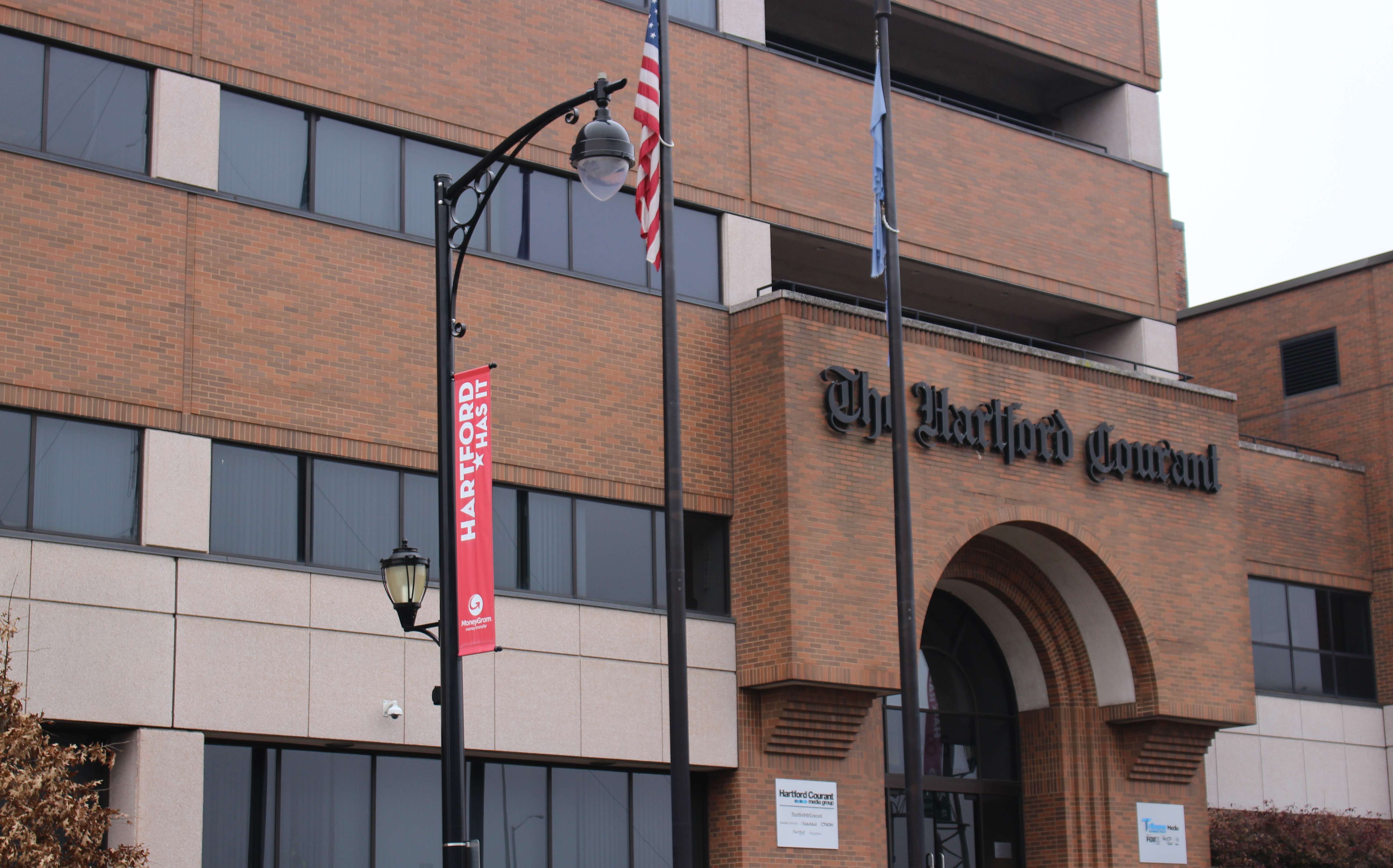
Pivot, respond to sudden challenge
So far, Connecticut has seen several news outlets take swift action to respond to anticipated revenue declines.
Fox 61 parent Tegna Inc., which acquired the station last year as part of a $740-million purchase of multiple outlets, announced April 6 that most of its employees would be required to take one-week furloughs before the end of June, while higher-ups would see pay cuts of 8% to 20%.
Days later, citing revenue declines, Hartford Courant parent Tribune Publishing announced permanent pay cuts of up to 10% for certain non-union employees, and 4.5% pay cuts for organized workers, said Lurye, chair of the Hartford Courant Guild.
Andrew Julien, the Courant’s publisher and editor-in-chief, and a Tribune spokesperson did not respond to requests for comment.
Others have decided to wait out the pandemic, or at least move away from print temporarily.
The Observers’ chain of weeklies, which serve Bristol, Plainville, and Southington, announced in late March they would close up shop for the remainder of the crisis.
The Newtown Bee announced in early April that it would cease publishing its weekly print issues for the time being, shifting to online coverage only.
The Hartford Business Journal shifted its biweekly print editions to digital-only versions until at least early June. That marks the first time HBJ has missed a scheduled print issue in 28 years.
Zwiebel noted that HBJ’s print publication largely gets delivered to offices and other workplaces, many of which are closed due to the pandemic, so it made sense to postpone printing and release an electronic version of the issues instead.
“Delivering a bunch of issues to … people’s offices where they are not going to see them, that’s not good, there’s no point to that,” Zwiebel said.
Reader base, business model matter
Not every Connecticut news organization — which vary widely in business model, size and financial strength — is impacted the same way by COVID-19.
Hearst — which is Connecticut’s largest newspaper operator — has leveraged a healthy, diversified balance sheet by committing additional funding from its other business interests to its newspapers.
In a recent conference call with publishers and editors at his 24 daily papers across the U.S., Hearst CEO Steven Swartz promised no furloughs or pay cuts at the privately held conglomerate, and even pledged modest bonuses.
Hearst disclosed in January that it posted record operating results in 2019 for the ninth consecutive year, entering 2020 with no debt.
As a nonprofit, the Connecticut Mirror gets most of its revenue from foundations and individual donors, and only about 10% from advertising, shielding the online news outlet from at least some of the near-term coronavirus impacts.
However, the timing is unfortunate, as a good chunk of that advertising typically comes in during the annual legislative session. With the 2020 session cut short by COVID-19, ads pushing various policy changes have also dried up, according to Publisher Bruce Putterman.
In addition, the Mirror was forced to cancel several upcoming fundraisers in late April and May, including a gala to celebrate its 10th anniversary in business.
However, Putterman is feeling relatively confident for now. The Mirror posted its strongest financial results to date in 2019, and assuming its able to get its federal stimulus and economic disaster loans and several grants, he expects to avoid having to make a significant draw on cash reserves.
The publication even hired two editorial staffers — reporter Greg Hladky and photographer Chloe Poisson — when the looming crisis became a certainty.
“Our instinct is to run to the fire, and then frankly try to figure out after the fact how to pay for that run to the fire,” Putterman said.
The Day is also feeling the hit from canceled events.
“This is the first year we’ve been doing quite a few events,” Dwyer said, including a job fair and sports banquet.
HBJ has already been forced to postpone two events, but is experimenting with webinars — including on the federal stimulus package — that show some revenue promise in the near term, but it’s not easy to replace everything.
“We won’t recoup every dollar that way and some events we will simply postpone until the sun comes out again,” Zwiebel said.
At WNPR parent Connecticut Public, paid memberships are the most important revenue driver, and they’ve declined a bit of late, said President and CEO Mark Contreras.
Like most, Contreras can only guess what the spring and early summer might look like.
“We have a sense that things are going to go down but we don’t have the actuals and won’t have them for another month,” he said.
Related Content

2022 Giving Guide
This special edition informs and connects businesses with nonprofit organizations that are aligned with what they care about. Each nonprofit profile provides a crisp snapshot of the organization’s mission, goals, area of service, giving and volunteer opportunities and board leadership.
Learn more
Subscribe
Hartford Business Journal provides the top coverage of news, trends, data, politics and personalities of the area’s business community. Get the news and information you need from the award-winning writers at HBJ. Don’t miss out - subscribe today.
Subscribe
2024 Book of Lists
Delivering Vital Marketplace Content and Context to Senior Decision Makers Throughout Greater Hartford and the State ... All Year Long!
Read Here-
2022 Giving Guide
This special edition informs and connects businesses with nonprofit organizations that are aligned with what they care about. Each nonprofit profile provides a crisp snapshot of the organization’s mission, goals, area of service, giving and volunteer opportunities and board leadership.
-
Subscribe
Hartford Business Journal provides the top coverage of news, trends, data, politics and personalities of the area’s business community. Get the news and information you need from the award-winning writers at HBJ. Don’t miss out - subscribe today.
-
2024 Book of Lists
Delivering Vital Marketplace Content and Context to Senior Decision Makers Throughout Greater Hartford and the State ... All Year Long!
ABOUT
ADVERTISE
NEW ENGLAND BUSINESS MEDIA SITES
No articles left
Get access now
In order to use this feature, we need some information from you. You can also login or register for a free account.
By clicking submit you are agreeing to our cookie usage and Privacy Policy
Already have an account? Login
Already have an account? Login
Want to create an account? Register
Get access now
In order to use this feature, we need some information from you. You can also login or register for a free account.
By clicking submit you are agreeing to our cookie usage and Privacy Policy
Already have an account? Login
Already have an account? Login
Want to create an account? Register
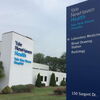





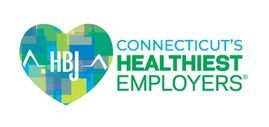

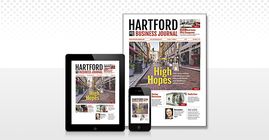
0 Comments